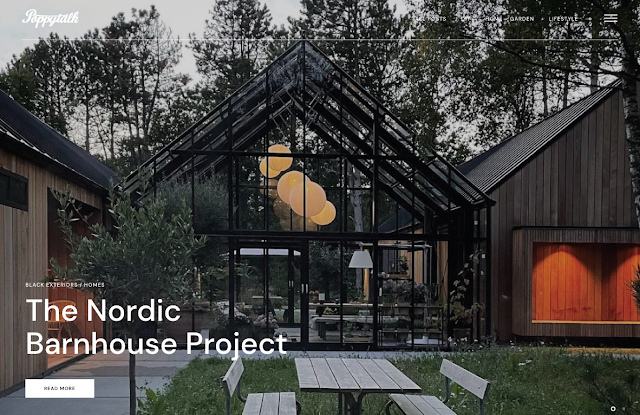We spotted a new furniture makeover by Nicole Phillips of the blog, Visual Heart recently and we asked her if she'd like to feature it here on Poppytalk this week. We love what she did and think you will too! Here's the post, in Nicole's words below:
This mid-century style sideboard was in rough shape. It’s made from particle board, the worst material in the world (ugh). It has a thin layer of melamine on top with lots of scratches and water damaged which immediately posed a challenge. I could see it had good bones and was just asking for a second chance at life, especially since mid-century modern is still very popular right now. Scroll down to see close-ups of the before and what it looks like now. I’m also sharing tips on how to paint water damaged particle board.
The first step is clean it, normally I’d wipe it down with warm water and a damp cloth, but this piece was different because the surface was broken and I didn’t want any more swelling to happen from previous water damage. If you don’t already know, particle board is like a sponge, the second water hits it, it swells up. So I decided to clean it with a dry microfibre cloth and vacuum.
Then it was time for the fun part, I used a hammer to carefully knock off the trim on the bottom of the piece. This trim was not necessary because I’m adding long legs to raise it up off the ground. It’s amazing how removing that trim made it look way more modern.
I sanded it all over to scuff up the surface so the primer could adhere, then Andrew helped by patching the holes and scratches with wood filler and sanded them smooth.
Next step, prime the entire piece with a thin coat of high-quality primer like Zinsser 123. Primer will seal in stains and will also seal the exposed water damaged particle board to prevent it from swelling again. Make sure your first layer is extremely thin, to avoid the exposed areas of the particle board from swelling. Avoid using a brush for the first couple of coat, instead, use a small foam roller for a more even thin application. Apply a few very thin layers until the entire piece is covered.
Time for top coat. I like to use Benjamin Moore Advance in high-gloss. You can roll or brush it on and it dries so smooth because of its self-levelling technology. It’s also water based so clean up is super easy. On this piece, I used Snowfall White and Mantis Green.
The wood legs are vintage from a top-secret local thrift store that salvages boxes of them. I save old mid-century style legs for future projects and the height of these were perfect for this piece. If you can’t find vintage legs you can always purchase the same style online or at your local hardware store.
The vintage legs were sanded down to remove the ugly red varnish, then a few coats of tung oil was applied to expose the natural wood grain and colour.
Finally, the old knobs were removed because they were cheap plastic and broken. They were replaced with brass knobs from IKEA. Let’s take a moment to talk about IKEA knobs, pulls and hardware in general, they’ve been killing it lately, bringing in some great knobs and pulls at affordable prices. I’m loving the brass and matte black finishes, I’m hoping they’ll do matte brass at some point.
Here’s the big reveal. It makes me wish I had room in our apartment to keep it. Those dividers are ideal for our (your) record collection….
Wanting to try a DIY project? Here are some materials you’ll need to bring some mid-century modern to an old dresser, sideboard or nightstand, product links below.
Nicole Phillips is a Vancouver based Graphic Designer and blogger.
You can learn more about her at visualheart.com or follow her creative side:
twitter.com/visualheart
pinterest.com/visualheart
instagram.com/visualheart


















No comments:
Post a Comment